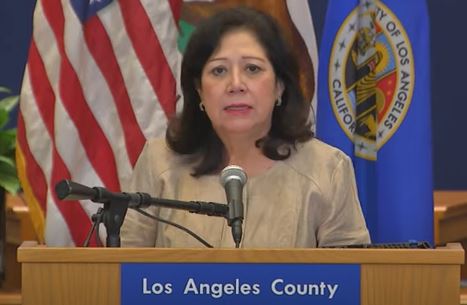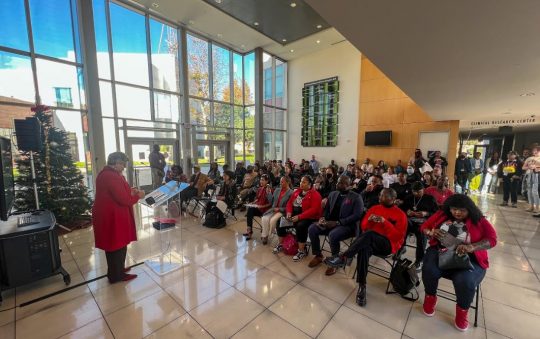Los Angeles County Officials updated the community with new information surrounding the COVID-19 outbreak. There is statistical evidence still pointing in the direction of decline. Although public officials are hopeful, they prepare and stress to the public the need to continue being steadfast in flattening the curve. Los Angeles is making strides in the right direction, due to the unity and understanding of the guidance from community leaders. New evidence revealed current shortcomings of underserved communities, because of COVID-19, Black single parent holds that are low income are at high risk of drastic food and security disparities.

Supervisor Hilda Solis discussed two essential factors for the county to immediately respond to. New research released today unveiled by USC Dornsife Public Exchange provided the first comprehensive analysis of the COVID-19 pandemic impact on food and security in Los Angeles County. The study was lead by Dr. Kayla De La Haye, her team worked closely with the County’s Emergency Food and Security Branch. Solis explained, “Food and Security refers to disruption in food access and regular eating because of limited money or other resources…”
USC Dornsife research unearthed a disproportionate level of food and security that is happening within Los Angeles. During the fourth quarter of the pandemic, 1 out of 4 L.A. County households experienced a critical level of severity within maintaining Food and Security daily. Numerically, that is approximately 873,000 households that are living through the disparity.
Los Angeles Public Health Director Dr. Barbara Ferrer provided new measurements of coronavirus in the county. The reports shown on Wednesday reflected 31 additional deaths, ten of these individuals were over the age of 80, nine of them had underlining health conditions. 14 people who died were between the ages of 65-79, ten victims had preexisting health concerns. six individuals were between the ages of 50-64, and five of them had underlining health problems. This brings the total COVID-19 related deaths in L.A. County to 6,423.
There were 1,265 new COVID-19 reports. In summary, there is a total amount of 263,333 coronavirus cases in the Los Angeles region. 11,615 incidents were reported in the city of Long Beach and 2,536 cases in the city of Pasadena. There is a total amount of 1,742 reported cases among the unsheltered.
The relationship between COVID-19 infection and ethnicity were provided. The racial background collected from 6,044 fatal cases showed 10% were African American, 15% were Asian, slightly less than 1% were Native Hawaiian or Pacific Islander, 51% were LatinX, 23% were White, and 1% identified as a different race or ethnicity. 92% of those who died due to COVID-19 had preexisting health concerns.
Solis stated, “The majority of adults experiencing food and security anytime between April and July are low income.” She went on to explain the major risk factors in this study reflected those who are unemployed, women, Black or LatinX, single parent households, and the ages of those affected are between 18-40. Those who are already at a higher mortality rate from the coronavirus, are also feeling the pains of starvation.
‘Angelenos’ is a general term to identify all people living in Los Angeles, bringing them to equal levels across the County. However, new research about COVID-19 is showing the reality of division living in L.A. Numbers reflect fluctuation in overall wellbeing of the person in the community. No one should feel the aches of an empty stomach, the silver lining is that the study shows a new relationship within an existing condition of underserved communities and compacted neighborhoods. The food banks and financial assistance is helping those facing a reality of starvation, there is an anticipation for the county to act fast to remedy the issue.






